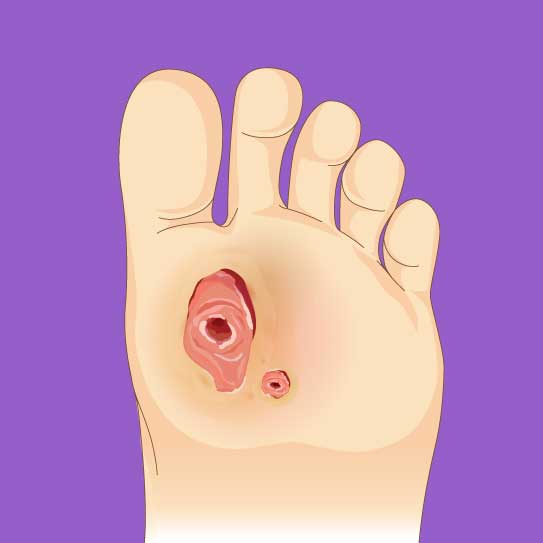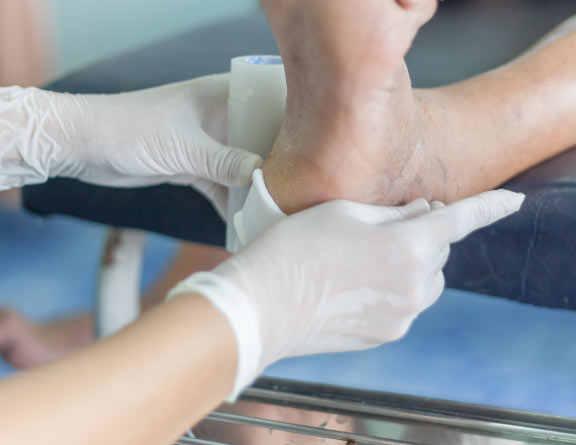Diagnosis
To diagnose the seriousness of the diabetic foot ulcer, your doctor may conduct a series of examinations. The doctor may want to know about your medical history and will conduct a physical examination to look for scratches, cuts and blisters. The doctor may feel your pulse to evaluate the blood flow to your feet. In addition to the physical exam, your doctor may also recommend X-rays to look for any misalignments in the feet due to decreased bone mass. MRI scans may also be conducted to get an idea about the extent of damage caused by the ulcer and if signs of any infection are seen, blood tests may be recommended.
Treatment
Debridement
Debridement is a procedure to treat wounds in the skin. In this procedure, a sharp tool or a scalpel is used to remove the dead tissue or infected skin tissues from the ulcerated foot. After the procedure, the wound is covered with a sterile bandage and the bandage is replaced daily. Ointments can also be used to hasten the healing process.
Infection Control
Foot ulcers are prone to infections. For infection prevention and control, your doctor may prescribe antibiotics like cephalexin, amoxicillin, moxifloxacin or clindamycin. These work against bacteria like staphylococcus aureus, β-hemolytic streptococci, Enterobacteriaceae, etc which are likely to cause infections in the ulcers.
Vascular Surgeries
Since one of the major causes of diabetic foot ulcers is narrowing of arteries and poor blood circulation, surgery may be required to increase the flow of blood.
Atherectomy is the surgical procedure used for the treatment of diabetic foot ulcers caused due to peripheral artery disease. In this procedure, plaque consisting of fat, cholesterol and calcium is removed from the artery, thereby making the artery wider. Wider arteries have better blood circulation. The plaque is removed by shaving or vaporizing using small rotating blades at the end of a catheter or by using laser energy.
The procedure is performed under the influence of general or regional anesthesia, depending upon your medical history. Sometimes, after atherectomy, balloon angioplasty may be performed. In Balloon Angioplasty, a stent is inserted into the blood vessel to keep it open.
If you have advanced blockage in the artery, gangrene, or open sores in the foot, your doctor may perform leg bypass instead of balloon angioplasty. Leg bypass allows the creation of a new route so that the blood can travel around the blocked artery and proper blood flow to the foot can be maintained.









.svg)









